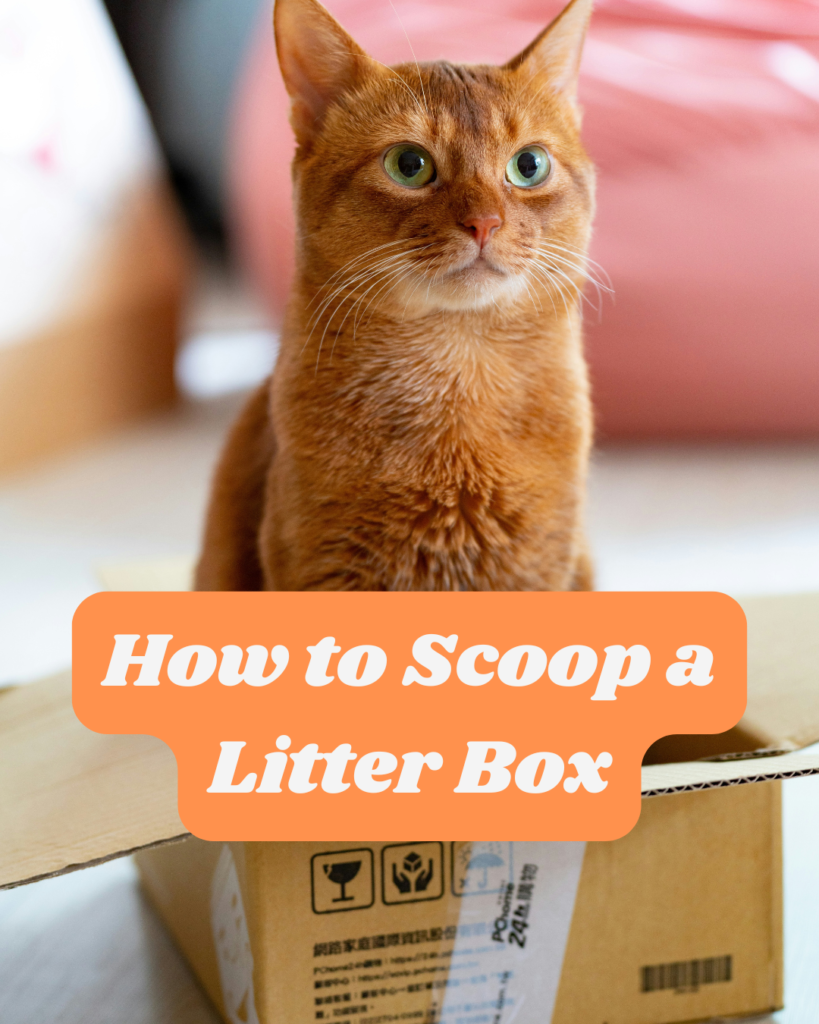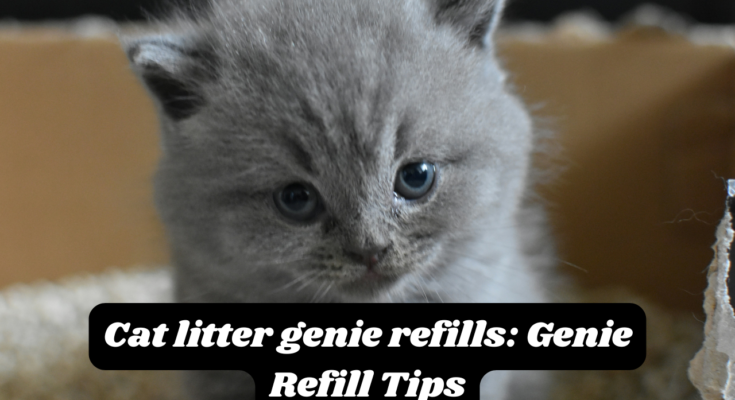How to Use Cat Litter Genie:
A Cat litter genie brings pleasure to cat owners, and preserves them company, just like an honest friend. Conversely, if you have reserved or are in possession of a cat, you should understand that nothing comes without drawbacks. For example, cats are not born knowing how to use the litter box and you have to teach your “friend” to do so. Moreover, dealing with cat litter should be one of the least pleasant parts of possession cat. Keeping house fresh necessitates you to empty the litter box on a regular basis. It is a smelly and time-consuming process. The self-cleaning litter boxes and stylish litter boxes have been on the horizon.
Whereas, the more difficult concern is where to place all the waste. If you take it to the trash can every time you empty the litter box, there is no doubt you will waste a lot of time. In addition, it will make garbage stinky because your trash can is dumped once a week. That’s where Litter Genie, a cat litter disposal system, is designed to help you. Litter Genie, a convenient cat waste disposal system, helps you keep home smelling fresh.
Lionpapa generic Litter Genie refill is considered as the best partner of Litter Genie, composed of high odor barrier materials and protection room fresh and comfortable. The 11 layers of EVOH materials of our litter genie refills make them stronger and more durable than normal litter pail refills.
Similarities and Differences between Litter Genie Standard & Plus:
The manufacture of Litter Genie Standard and Plus is not quite the similar, so there is no transformation in how to use them. And they can hold soiled litter for up to 14 days (for a cat).
As the name suggests, Litter Genie Plus is stronger than Litter Genie Standard, built-in antimicrobial in the pail that avoids odor make happen by bacteria on the pail.
How to Use Litter Genie Standard & Plus?
(1) Pull the film out (there is a “pull here” sign, start by here) and leave about 23 inches. If you don’t know how long it is, put the pack on the floor and leave it a little longer than the height of Litter Genie.
(2) Tie a knot at the bottom of the film and make sure it is tight. If not, the litter waste may run out and pollute the pail and you might get dirty when emptying Litter Genie. Then push it down through the center hole.
(3) Open the lid and pull the funnel up. Place the refill on the lip.
(4) Pull the handle and place hand inside the bag to push the film down into the bottom.
(5) Push down the funnel and close the lid.
(6) Insert the scoop holder in the grooves on either side.
Now, your Litter Genie is ready for it. The steps are as easy as 1,2,3.
Scoop clumps from your litter box.
Open the lid, dump the clumps and close the lid.
Hold down pail and pull the handle. The clumps drop down to the bottom of the refill bag.
How to Empty Litter Genie Standard & Plus?
(1) Open the unit in the middle.
(2) Pinch the bag a few inches, which can allow you to tie the knot. Pull it into the cutting mechanism and all you have to do is to pull it firmly to cut the bag.
(3) Tie the used bag and remove it from the pail.
(4) Pull down pail refill to the bottom of the unit and tie a knot. Then close the unit.
While you won’t have to pick up poo in a plastic bag after every deposit like a dog owner, you will have to adopt a maintenance routine of scooping out clumps of urine and feces and giving the litter box a thorough change and cleaning regularly. How you clean and maintain a litter box depends on situation.
Litter Box Cleaning Variable 1: Type of Litter
The type of litter you choose makes a difference in how often you’ll need to clean the cat box. Clumping litter absorbs cat urine and forms hard clumps that can be scooped from the box, leaving the unsoiled litter behind. If you use non-clumping litter, urine will be absorbed by the clay or other ingredients such as corn or wood, with some falling to the bottom of the cat box under the litter.
Clumping litters need changing less frequently because you can use a litter scoop to remove the coated clumps of cat pee and poop. Non-clumping litters cannot be scooped, so to clean them you must change out all of the litter each time. A litter that contains odor-controlling ingredients will keep down the smell and extend how often you will need to scoop the box or change out all of the litter.
Litter Box Maintenance Variable 2: Number of Cats
It stands to reason that the more cats you have, the more urine and feces will accumulate in the litter boxes and the more often you’ll have to clean them. While this is true for the most part, some litters are designed for multiple-cat households and have strong odor-controlling ingredients to help prolong the time between cleaning. If you have more than one cat, you’ll want to have more than one litter box, too, so this helps distribute the urine and feces between the boxes. In this case, you won’t have to clean the individual boxes any more often; you’ll just have two or more boxes to maintain.
Two Types of Litter Box Cleaning: the Scoop and the Change
If you’re a clumping cat litter user (and about 60% of kitty parents are), there are two ways to clean the litter box: the scoop and the change. Scooping out clumps of urine and feces is something done regularly, every other day at minimum, but often daily or even twice daily if you have a cat in a small apartment and want to keep litter box smell under control. Cats don’t like dirty litter boxes any more than you do, and kitty may start going outside the box if you don’t keep it clean.
The other type of cleaning is when you dump all litter, scrub out the box, and start over fresh with new litter. If you have a non-clumping cat litter, this is the only way to clean the cat box: remove the old litter plus urine and feces, and add fresh litter. If you use clumping cat litter, scooping the poop and pee regularly prolongs the need for a dump-and-change, though this more thorough cleaning should still be done at least monthly.
How to Scoop a Litter Box

Scooping out the litter box is much the same as sieving out items from the sand, but in this case the buried “treasure” is clumps of urine and feces. The real treasure, though, is a clean litter box in about the same amount of time it takes to brush your teeth.
Giving the litter box a scoop is easy and takes only a few minutes. Here’s the basic process for how:
Using a slotted litter scoop, dig down into the litter and fill the scoop.
Keeping the scoop over the litter box, shake the scoop gently side to side. The litter will fall through the slots back into the box and the clumps of urine and feces will remain in the scoop.
Dump the clumps into a plastic bag and head into the box for another scoop. Continue this process of scoop, sieve, and dump until scoop only finds litter and no more clumps.
Seal the bag of litter and dispose outside.
Clean the edge of litter box scoop with soap and water and let dry.
How to Change a Litter Box:
To change out all the cat litter in your box, whether you use clumping or non-clumping litter, the process is the same. Follow these steps for how to change the litter box:
Place a garbage bag over the end of the litter box and tilt the box up to pour all the litter into the bag. Use the litter scoop or another tool to scrape any cat litter stuck to the bottom of the litter pan. Alternatively, carry the litter box to a large trash can and dump the entire contents of the box into the trash bag.
Wash the litter box with soap and water. A bristled scrub brush helps, and your bathtub is a great location for this job. Don’t use chemicals such as bleach or ammonia. Cats are very sensitive to smell and a lingering chemical odor may cause your cat to avoid the box. Never use chlorine bleach because it can combine with the ammonia in cat pee to produce a toxic gas.
Dry the cat box with a towel or paper towels.
Fill the box with 3-4 inches of fresh litter.
Note: to help avoid litter being stuck to the bottom of the pan, try using ARM & HAMMER™ Slide™ Clumping Cat Litter for easy clean up.
How Often Should You Change the Cat Litter?
If you use a clumping litter, it’s best to scoop the box daily and change it out completely at least monthly. If you have more than one cat, it may be best to change the cat litter more often, every 2-3 weeks. If you use a non-clumping litter and have only one cat, changing the litter twice per week is a good guideline. If you have more than one cat, every other day may work better.
There are no hard and fast rules for how often you should change the cat litter. Some cats are larger and have larger poop and greater amounts of urine, while others have tiny feces and smaller spritzes of pee. Your cat’s actual output plays a role in how often you need to scoop or change the box.
Cat is especially finicky or tidy, they may refuse to use a litter box that hasn’t been scooped or changed. In these cases, you’ll need to clean the box more often. Pay attention to cat’s output and litter habits and adjust as needed. You can also check with vet about best practices for different types of litter, especially pellet-based ones.
Litter Box Maintenance with ARM & HAMMER™
Try these cat-approved ARM & HAMMER™ cat litters to help keep your kitty happy and healthy and litter box clean and tidy.
- ARM & HAMMER™ Clump & Seal™ AbsorbX™ lightweight cat litter: Thedesert-dry minerals absorb urine and odors extra quickly and the lighter weight makes it easier to lift, carry, and pour. Available in scented or unscented formulas.
- ARM & HAMMER™ Clump & Seal™ Multi-Cat: If you have a clowder of cats, use this hard-clumping litter for easy clean-up and 7-day odor control.
- ARM & HAMMER™ Feline Pine™ Non-Clumping Pine Pellet Litter: This litter is a good choice for kittens, cats recovering from surgery, and household that prefers a 100% natural kitty litter with no dust or tracking.




